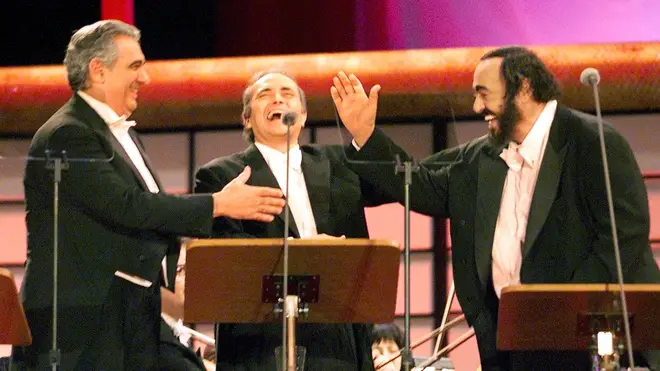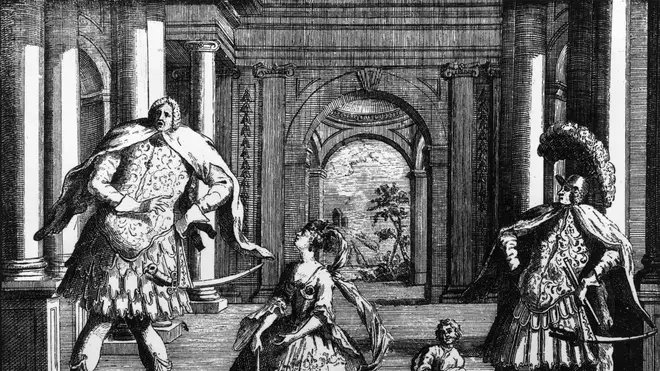On Air Now
Relaxing Evenings with Zeb Soanes 7pm - 10pm
4 June 2018, 12:45

Tenors are the dashing handsome princes of opera. They wow the audience with their stratospherically high nots and they ALWAYS get the girl. But it hasn't always been this way. In fact, the story of how the tenor became is a lot more gruesome than you might realise…
Tenors were not destined for greatness from the get-go. In fact, from the point of view of evolution, tenors should be relegated to the back of the reproductive queue. People are scientifically proven to prefer low and resonant voices in potential mates rather than your high Thom Yorke/Michael Jackson types.
So how did tenors become the voice of opera’s heroes and lovers?
Although we have no recordings before the 20th century, it’s almost certain that the sound of voices classified as ‘tenor’ have changed over the centuries depending on fashions and methods of teaching, along with the rise and fall of certain voice types, such as the castrato.
Introducing the castrato: the superstars of the 18th century
For many years, castrati were the golden boys of opera and oratorio, especially in Italy. These were talented trebles who were castrated before puberty in order to preserve their angelic ‘unbroken’ voices.
Although widely carried out, this practice was always illegal and the castrati suffered for their art, both mentally and physically. Nevertheless, they occupied a unique place in the society of the day; classed as neither male nor female they enjoyed a sort of genderless freedom and were sexualised and desired by both men and women. Above all, they enjoyed a fame and popularity verging on celebrity, and they played the vast majority of romantic lead opera roles:

Ombra fedele anch'io - Idaspe (1730) de Riccardo Broschi. Farinelli
However other countries were not as keen as Italy was to castrate their young boys. In countries such as Germany and England tenors fared better, and you find more heroic tenor roles in the English and German repertoire of the 17th and 18th centuries, such as Purcell’s Dido And Aeneas (1680) and Handel’s Samson (1743).
By the latter half of the 18th century Italy were exporting castrati all over Europe, but the practice began to lose its popularity and composers such as Mozart were already casting lower voice parts into leading roles; think of Figaro and Don Giovanni, two of Mozart’s most famous characters, and both written for baritones.
As their performing careers declined, the remaining castrati became teachers and their tenor pupils inherited the lightness in the top of the voice using their falsetto blended with their full voices to negotiate roles originally written for the unnatural voices of their instructors...

Death On The High Cs
But this lightness and imitation of the castrato voice wasn’t to last. The era of the modern tenor voice really began at the start of the 19th century when it became fashionable for a tenor to be able to reach high notes using a chest or mixed register, without reliance on their light falsetto voice. With limited knowledge of vocal physiology or health, this was a risky business, and in 1822 one tenor, Americo Sbigoli, burst a blood vessel in his neck and died on stage.
The first notable ‘modern’ tenor to hit a high C (and live to tell the tale) was the French tenor Gilbert-Louis Duprez in 1831 during the first performance of Rossini’s Guillaume Tell. This striking sound was still relatively new and shocking to the audience, and it wasn’t an immediate hit. Rossini absolutely hated it, saying that the sound was like “the squawk of a capon (a castrated rooster) with its throat cut.”
But the floodgates had been opened, and there was no turning back, and as the 'bel canto' school of singing grew in popularity, it changed the tenor voice forever.
The showpieces for tenor voice
Some of the composers most associated with the bel canto style of opera are Donizetti, Verdi and Rossini. Between them they created a gauntlet of some of the most challenging arias in the tenor repertoire:
‘Pour Mon Âme’ from La Fille Du Régiment – Donizetti
The piece features no fewer than nine high Cs, and it catapulted Luciano Pavarotti to stardom:

Juan Diego Florez - La Fille du Regiment - Ah mes amis
‘Si Ritrovarla Io Giuro’ from La Cenerentola - Rossini
Another aria which contains a show-stopping high C. A notable recent performance came from Javier Camarena who was stepping in for superstar Juan Diego Flórez at the Metropolitan Opera in New York. The audience reacted so explosively to his performance, that Camarena gave an encore after the show’s conclusion, making him only the third person to give an encore at the Met in the last seventy years:

La Cenerentola: "Si, ritrovarla io giuro" (Javier Camarena)
Although it might seem counter-intuitive to have high male voices playing romantic leads, the popularity of such roles prove how effective it must be.
David Huron, a professor of music and cognitive science at Ohio State University, explains:
When singers sing high and loud, the brain releases the hormones epinephrine and norepinephrine, causing a general increase in physiological arousal – higher heart rate, faster respiration, increased perspiration and greater attentiveness.
So there you go! Maybe there is a scientific reason why all those high notes make us go weak at the knees...